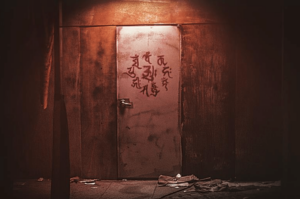The use of 8K camera for film or movie capture is not new, but their use to create the three-screen content for a ScreenX or 4DX theater is new. According to CJ 4DPlex, the developers of these theatrical formats, the new film GUIMOON: The Lightness Door is the first one developed from the beginning with these venues in mind – and the first to be shot with a single 8K camera.
A ScreenX screen is a theatrical venue that features a standard main screen but adds side screens that can expand the visual impact of the film. A 4DX theater expands the experience by adding vibrations and movements in special chairs.
Historically, the ScreenX and 4DX versions of the film were created after the main film was complete using assets including extra camera shots or additional cameras to build the side screen content. The new approach, called “The New K-Movie” business model seeks to consider the ScreenX and 4DX versions during development, production and post-production. Not only does this business model enable the release of the conventional 2D film along with the ScreenX and 4DX versions, but a VR version can also be created and distributed OTT should that option be desired. The differences between conventional film making and the new K-Movie model are explained below.
|
Categories |
Conventional Movie |
The New K-movie |
|
1) Screening Format |
Only 2D |
2D, 4DX, ScreenX |
|
2) Expansion |
Film à OTT |
Film à OTT, VR, Attraction |
|
3) Securing Screens |
Regular distribution model (hard to secure) |
1,100 4DX/SX screens globally Simultaneous release |
By using a single 8K camera to capture the movie, the center of the image is used for the main screen while the edges of the image form the side screen content. Production of the film remains the same as does the storyline, but the film was edited in such way to take advantage of conventional 2D and ScreenX formats, in addition to changing up the ending as well.
The movie takes place in a community center where a mass murder was committed years earlier and involves a paranormal investigator who discovers a door to another world. On a ScreenX screen for example, the ghost cannot be seen in the conventional format but will appear on the side screens, thereby increasing the tension felt by the audience.
To learn a little more about the production process we reached out to June-Yu from the marketing team at CJ 4Dplex to ask a few questions:
Q: What cameras were used along with other capture details?
A: The camera what we filmed with was the “RED MOSTRO VV”. We captured at a frame rate of 23.975fps and recorded in the RED RAW format with a 5:1 compression ratio.
Q: How was the content formatted for ScreenX?
A: We used just the one camera for each scene to create all three screens with a wide-angle lens. We simply crop and divide three canvases from the one 8K image.
Q: How is the content finished?
A: Front: 2048 x 858(DCI Scope), 24fps, SDR, XYZ-DCI P3, DCP; Side: 3072 x 858, 24fps, SDR, XYZ-Rec.709, Apple Prores
(CC)

